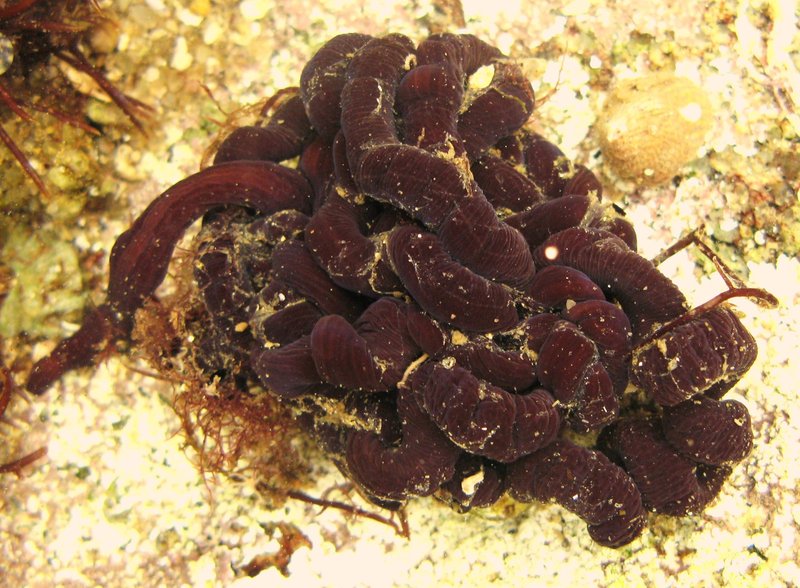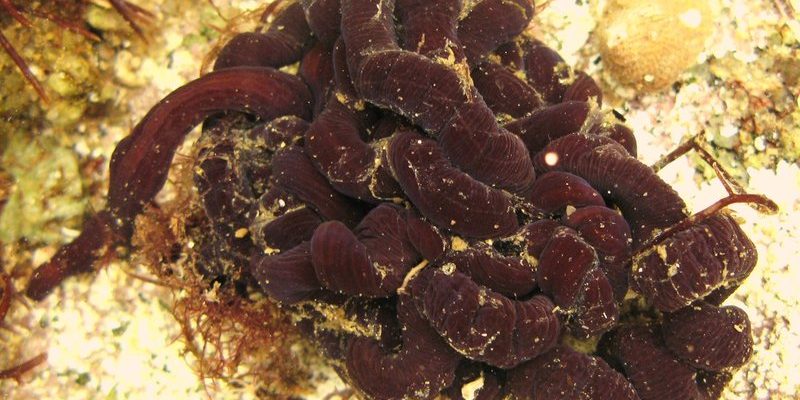
Both bootlace worms and flatworms can be found in similar habitats, and they might share similar features. Yet, they belong to different groups and have unique characteristics that set them apart. Not only are their appearances distinct, but their biology and behavior also take different paths. So, let’s dig in and explore how to tell these fascinating creatures apart!
What Are Bootlace Worms?
Bootlace worms, or *Lineus longissimus,* are some of the longest worms in the world—think of them as the “giants” of the worm family. These creatures can reach lengths of up to 55 meters (about 180 feet) in some cases! Typically found in shallow coastal waters, bootlace worms have a long, slender body that looks a bit like a piece of pasta flowing through the water.
What’s really interesting about bootlace worms is their colors, which can range from yellowish-brown to a more dramatic bright green. As they glide through water or burrow into sediments, they might look like a single entity, but they’re actually made up of tiny segments. So, if you spot a long, flowing creature that seems to sway or undulate, you’re most likely looking at a bootlace worm.
What Are Flatworms?
Flatworms, or *Platyhelminthes,* are a diverse group of creatures that come in many shapes and sizes. They can be found in freshwater, saltwater, and even in moist terrestrial environments. Unlike bootlace worms, flatworms tend to have a more flattened, ribbon-like appearance, and they can be brightly colored or patterned, which makes them visually striking.
These creatures possess a wide range of life habits—some are free-living, while others are parasitic. You might find flatworms hiding under rocks or swimming through the water, often with their bodies showcasing vibrant colors like vivid pinks or greens. They’re smaller than bootlace worms, typically measuring just a few centimeters in length. This distinct shape and lifestyle make flatworms unique, but they often end up confused with their long, squiggly counterparts.
Key Differences in Appearance
Now that we know what each worm is, let’s break down how to differentiate bootlace worms from flatworms based on their appearance. The first thing to notice is the length. Bootlace worms are incredibly long and can be quite thin, giving them a snake-like appearance. Flatworms, on the other hand, tend to be much shorter and wider, resembling ribbons rather than snakes.
When it comes to color, bootlace worms often have a more consistent, solid hue, while flatworms may exhibit a variety of colors and patterns. Flatworms can also have distinct markings, like stripes or spots, making them look more like tropical fish compared to the more uniform bootlace worm.
In terms of movement, bootlace worms are graceful swimmers, undulating through the water. Flatworms, however, often glide smoothly across surfaces or swim with a more gliding motion. If you observe their behavior in real time, the difference can be quite clear!
Habitat Preferences
Both bootlace worms and flatworms prefer wet environments, but they inhabit slightly different niches. Bootlace worms are typically found in coastal waters, often hiding in sandy or muddy substrates. They thrive in areas where they can bury themselves, making them a bit elusive. If you’re searching for them, look in shallow waters and estuaries.
Flatworms, in contrast, can live in a wider range of habitats. You’ll find them in both fresh and saltwater environments, as well as on land in damp areas. Their adaptability allows them to thrive in places like ponds, streams, and even gardens. So, if you’re scouring a beach or a garden for worms, knowing where to look can help you distinguish one from the other.
Behavioral Differences
The behavior of these worms also sets them apart. Bootlace worms generally prefer a more solitary lifestyle. They might remain hidden for days, curling up in their cozy sandy homes. When they do venture out, they often move with the current, swaying gracefully through the water.
Flatworms, however, can exhibit a broader range of behaviors. Some are active hunters, while others become parasites, attaching to hosts. They can be quite adventurous, exploring their surroundings and seeking out food sources. Flatworms tend to be more visible due to their colors and patterns, and you might even spot them moving around during the day.
Why It Matters
So, why should we care about differentiating bootlace worms from flatworms? Understanding the differences between these two types of worms can help cultivate a deeper appreciation for biodiversity. Both play unique roles in their ecosystems, contributing to the food chain and even helping to control populations of other organisms.
Plus, knowing what you’re looking at can enhance your nature walks or beach-combing adventures. Whether you’re a budding naturalist or just someone who enjoys spending time outdoors, recognizing these creatures can make your exploration much more rewarding. Plus, it’s always fun to impress your friends with your newfound knowledge!
In summary, while bootlace worms and flatworms may share some similarities, their differences are what make them truly fascinating. From their appearances and habitats to their behaviors, these creatures offer unique glimpses into the diverse tapestry of life on Earth.
Next time you’re exploring a beach or a garden pond, take a moment to appreciate the distinctions between these creatures. Who knows? You might just become the go-to worm expert among your friends! Remember, nature is full of wonders—and understanding it a little better makes every adventure a bit more exciting.

